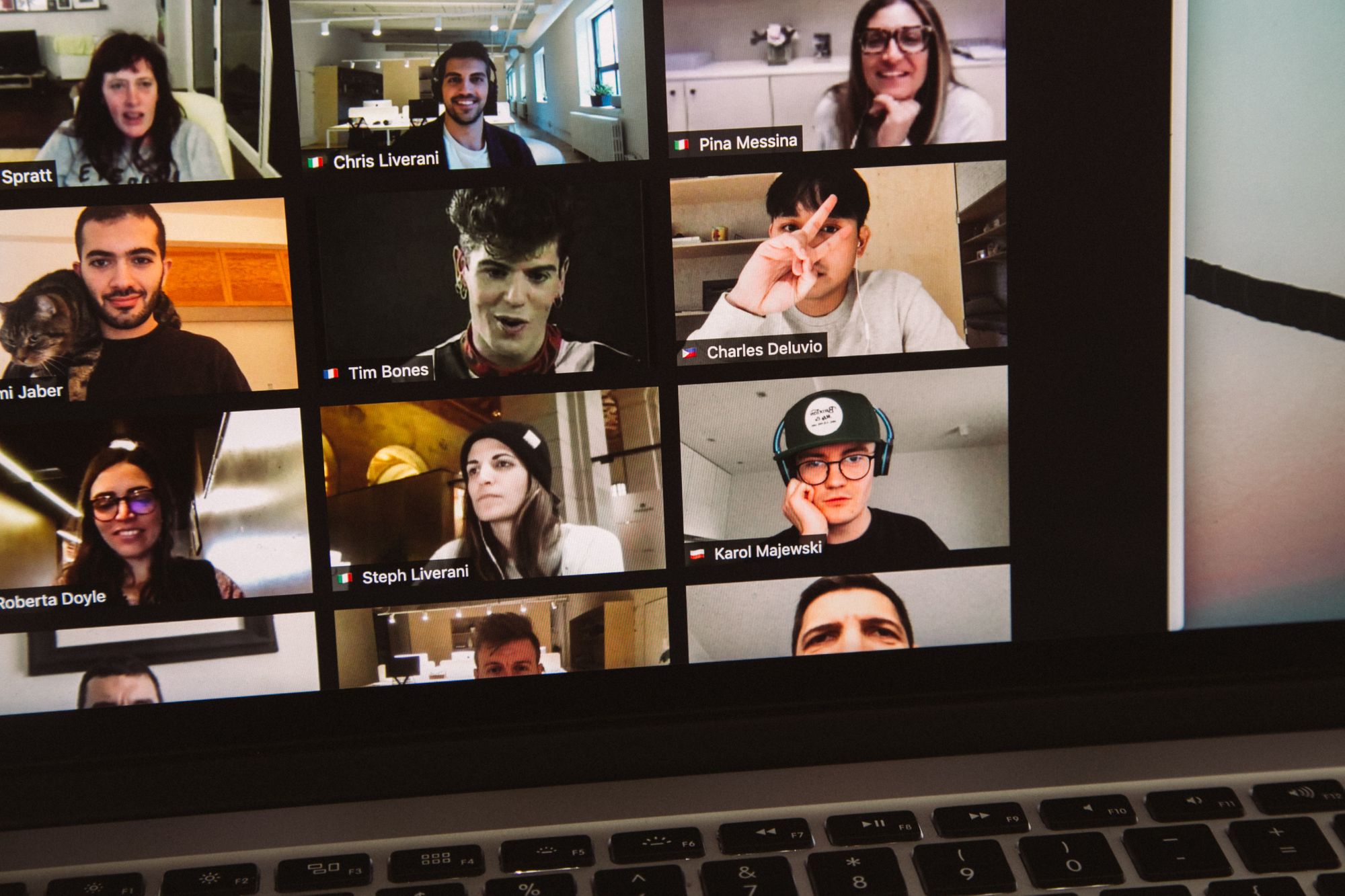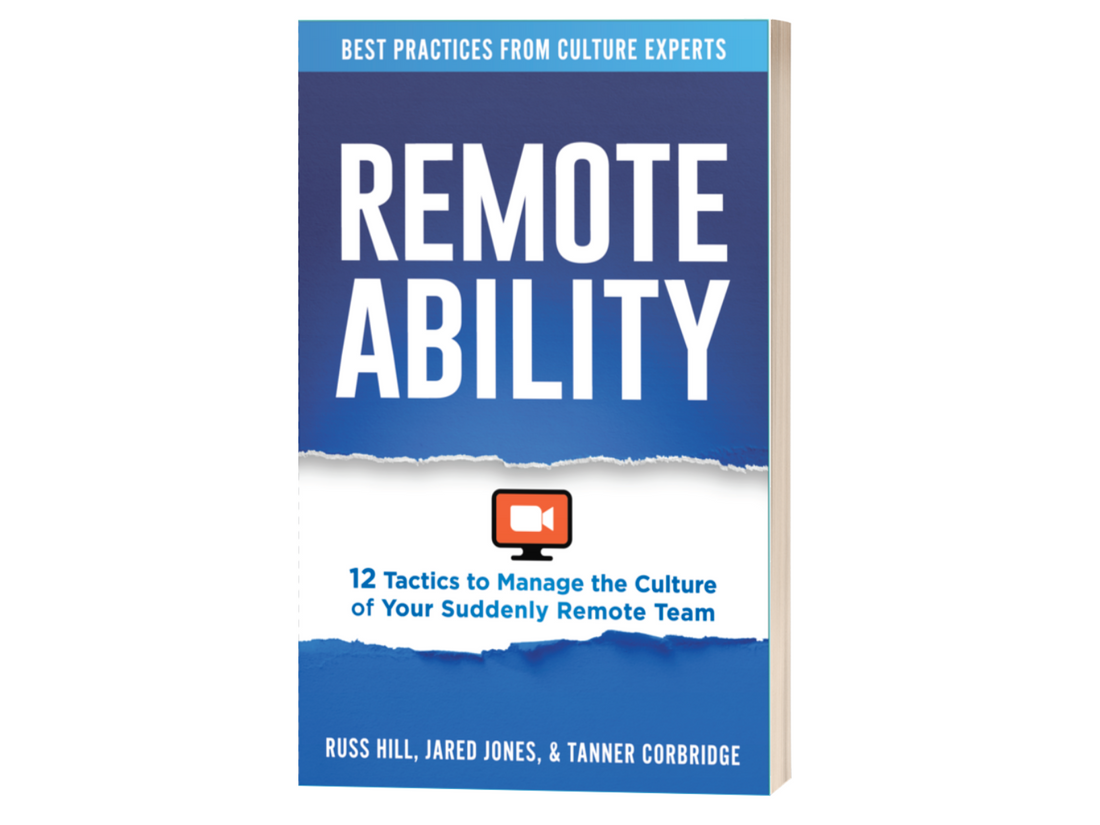None of us ever saw ourselves doing this. We never dreamt we'd be leading a team that is either completely remote or spending some time each week working from home.
In the months after the Covid-19 pandemic began our firm got inundated with questions from leaders asking: can you help us figure out how to lead remotely?
The funny thing was that in February 2020, I was cornered by a senior executive at a Fortune 50 company who asked if we could start doing some of her team meetings virtually. She asked that question as I was racing off the airport and so I was more direct than I should have been.
"These sorts of meetings don't work virtually. You have to be in the room with each other," I said as I wheeled my suitcase out of the meeting room.
A few weeks later I was sitting through an introduction to Zoom.
The 12 Tactics of Remoteability

Doug McMillion was one of the first executives we saw who understood how to lead in this new virtual environment. The post you see above was one of dozens he made in the first few weeks of the lockdown.
Doug is President and CEO of Walmart. Besides showing off toilet paper what was the purpose of the picture? It wasn't aimed at customers. It was posted for leaders across Walmart to see. As uncertainty paralyzed so many where was Doug? In the stores. Working alongside Eulalio and Megan at Store 746.
In our book, Remoteability, Tanner Corbridge, Jared Jones, and I highlight 12 tactics that were clearly having a big impact on organizations thriving in the midst of this new work environment. One of the tactics is being demonstrated by Doug in these posts. We called it Visibility. When uncertainty increases leaders make themselves more visible. Their presence provides stability (unless they're running around with their hair on fire - which some have done) and allows them to provide direction.
In an office setting leaders walk the floor to be visible. In a virtual or hybrid work environment leaders have to make extra effort to not disappear. As we discuss in the book there are lots of ways to be visible including group texts, more frequent (and much shorter) virtual meetings, phone calls, emails, and group message apps like Slack.
Creating Clarity

Another one of the 12 tactics we discuss in the book, in fact the first one, is Creating Clarity.
How do you know what people are working on when you can't see them and rarely, if ever, interact in person with them now? People will always fill their time with things they think are important or deserve attention. But, as the leader of the team, chances are you might think they should be focusing on something else.
That's where clarity becomes critical. In periods of uncertainty, disruption, or massive change long-range targets are important but short-term priorities become critical. We call them Key Expectations. Key Expectations provide clarity around what we need to deliver and when we need it done.
In Remoteability, we tell the story of a food manufacturing company that held a Zoom meeting with hundreds of sales reps in the second quarter of 2020. In that meeting executives communicated the Key Expectation of "5 by 25."
They explained that 5 by 25 meant every sales rep needed to reach out to five new potential clients by May 25th. Their team logged off that meeting having complete clarity on what mattered most in the next 30 days.
Demonstrating Empathy

The massive shift in how we work has elevated the importance of a skill that some of us might have viewed as a "nice-to-have" but optional. While working from home has its advantages it has also presented major challenges for many people.
The office is now right next door to a child's room. On in many cases where homes don't have a designated office mom or dad are now attending virtual meetings while children or pets make noise and require attention just off screen.
It's not just parents who have found themselves struggling to separate their personal and professional lives. Everyone has faced health concerns, limitations on where they can and can't go, and had family members or friends affected physically, mentally, emotionally, or financially by a year of uncertainty and a fast-spreading virus.
In Remoteability we defined empathy as the capacity to understand what someone else is experiencing from their frame of reference.
Empathy can be easy to demonstrate in person. But, how do you demonstrate it over a virtual meeting. And, how do you even know what someone is going through when the hallway chatter and pre-meeting conversation no longer exists?
In a virtual or hybrid work environment, leaders must make extra effort to connect with members of their team and demonstrate empathy for the challenges they're facing. Doing so builds trust, increases collaboration, impacts engagement, and ultimately leads to greater ownership and retention.
The Other Tactics
I didn't have space in this post to walk you through all 12 tactics. Doing that would require writing an entire book - oh wait! 😉
The other tactics include accessibility, transparency, authenticity, alignment, ownership, managing beliefs, and running effective virtual meetings.
The need to build skills around Remoteability won't go away when most people are vaccinated and offices begin to reopen. The workplace is forever changed. A portion of the workforce will likely always work from home all, or part, of the time. They'll need leaders trained and skilled in how to effectively lead them.
Those leaders will be those who have Remoteability.


Comments